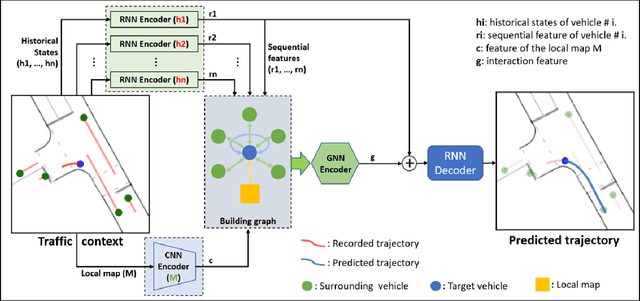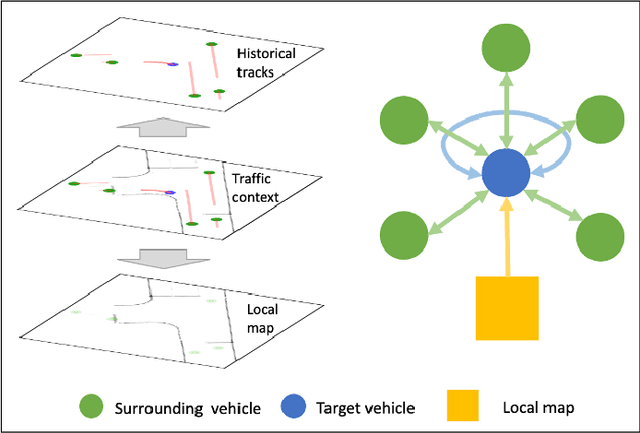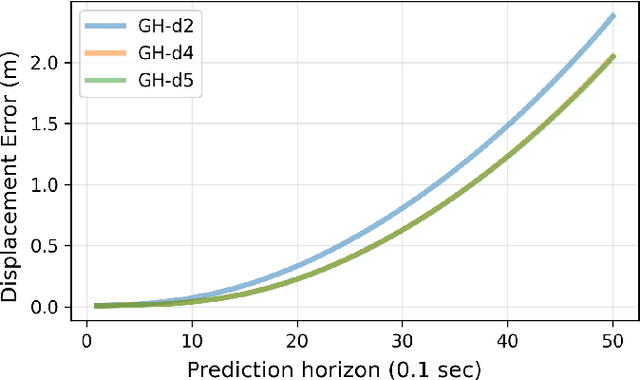ReCoG: A Deep Learning Framework with Heterogeneous Graph for Interaction-Aware Trajectory Prediction
Paper and Code
Dec 09, 2020



Predicting the future trajectory of surrounding vehicles is essential for the navigation of autonomous vehicles in complex real-world driving scenarios. It is challenging as a vehicle's motion is affected by many factors, including its surrounding infrastructures and vehicles. In this work, we develop the ReCoG (Recurrent Convolutional and Graph Neural Networks), which is a general scheme that represents vehicle interactions with infrastructure information as a heterogeneous graph and applies graph neural networks (GNNs) to model the high-level interactions for trajectory prediction. Nodes in the graph contain corresponding features, where a vehicle node contains its sequential feature encoded using Recurrent Neural Network (RNN), and an infrastructure node contains spatial feature encoded using Convolutional Neural Network (CNN). Then the ReCoG predicts the future trajectory of the target vehicle by jointly considering all of the features. Experiments are conducted by using the INTERACTION dataset. Experimental results show that the proposed ReCoG outperforms other state-of-the-art methods in terms of different types of displacement error, validating the feasibility and effectiveness of the developed approach.
 Add to Chrome
Add to Chrome Add to Firefox
Add to Firefox Add to Edge
Add to Edge